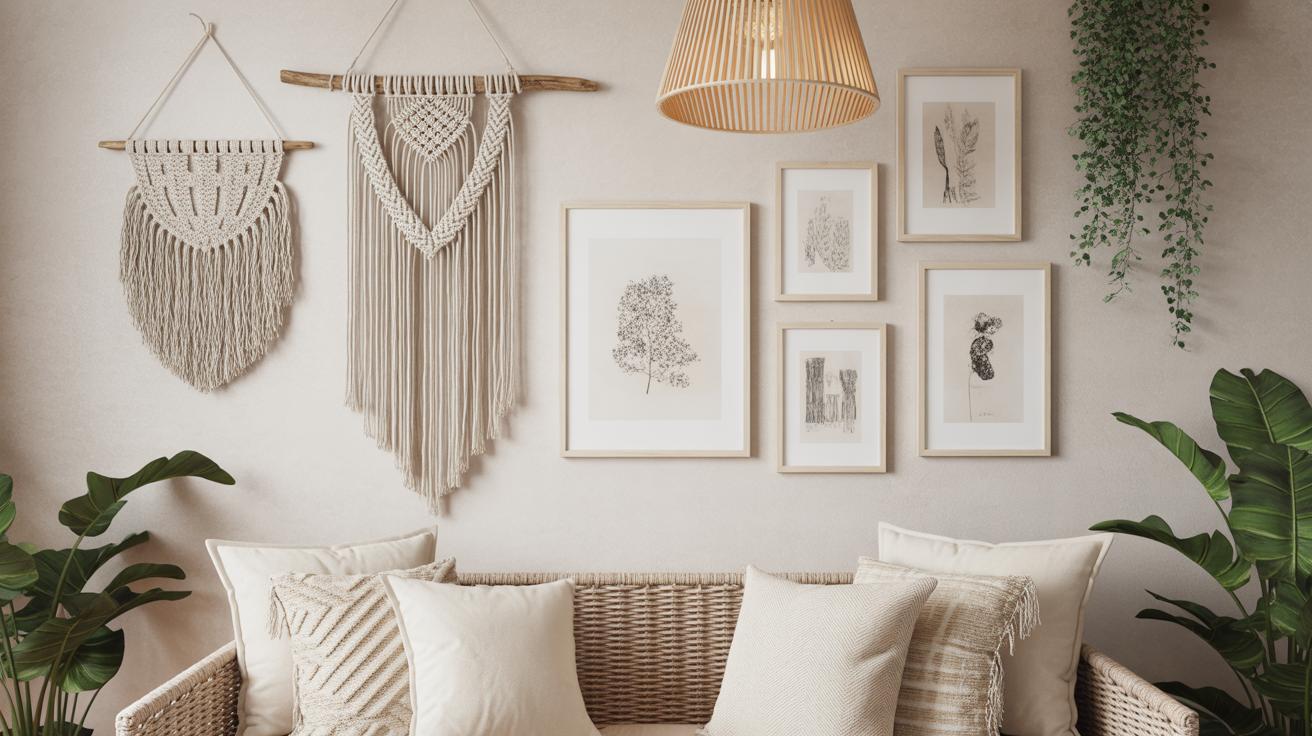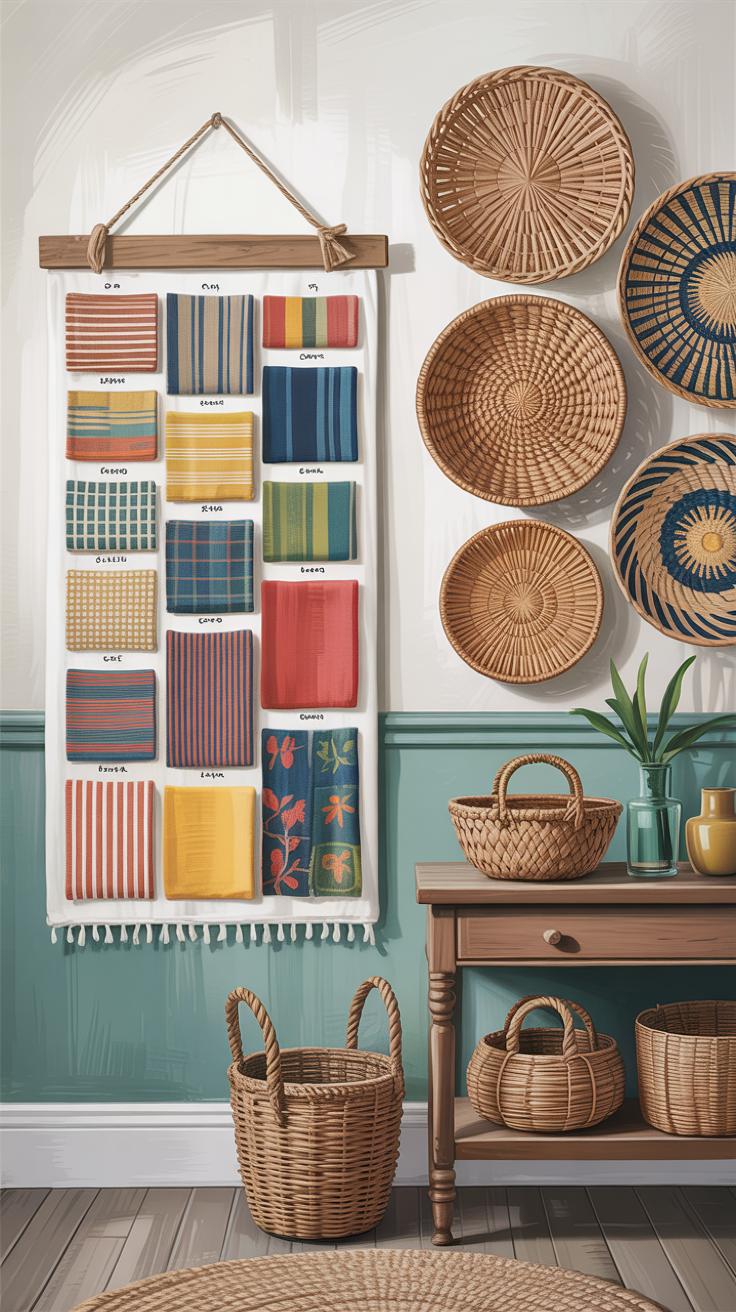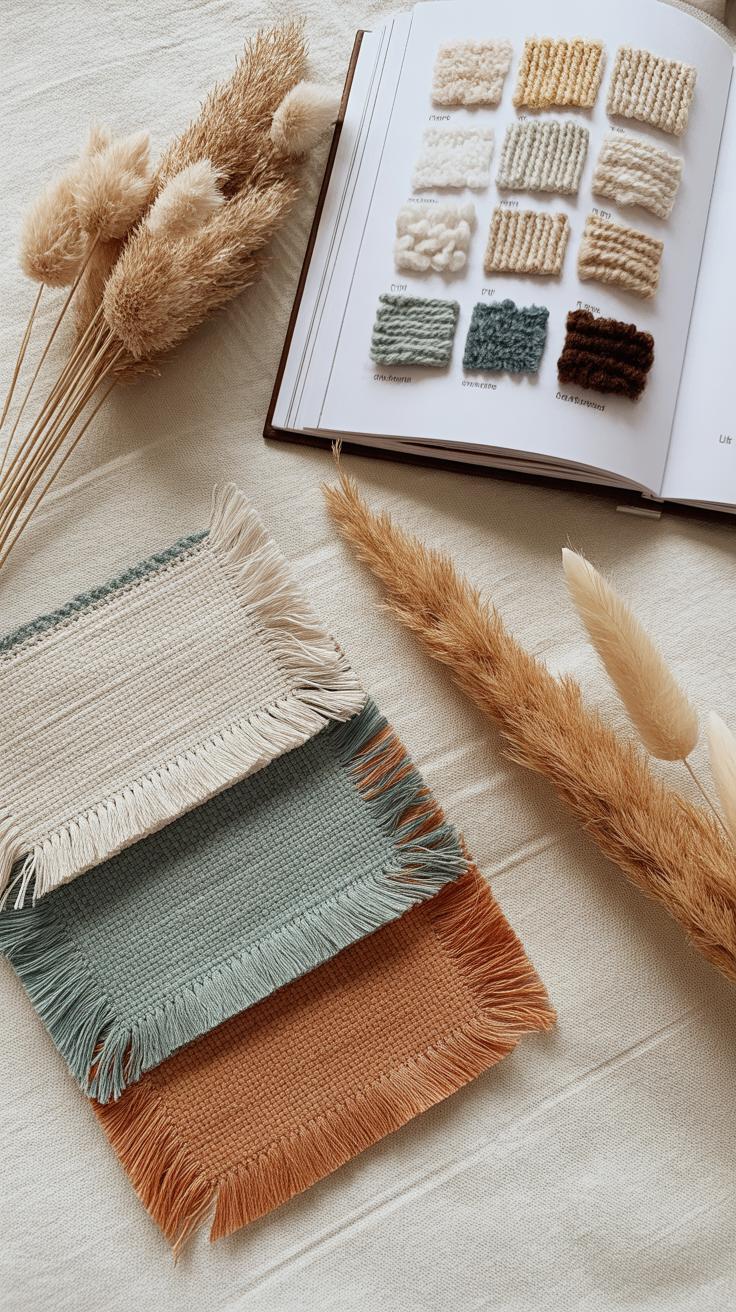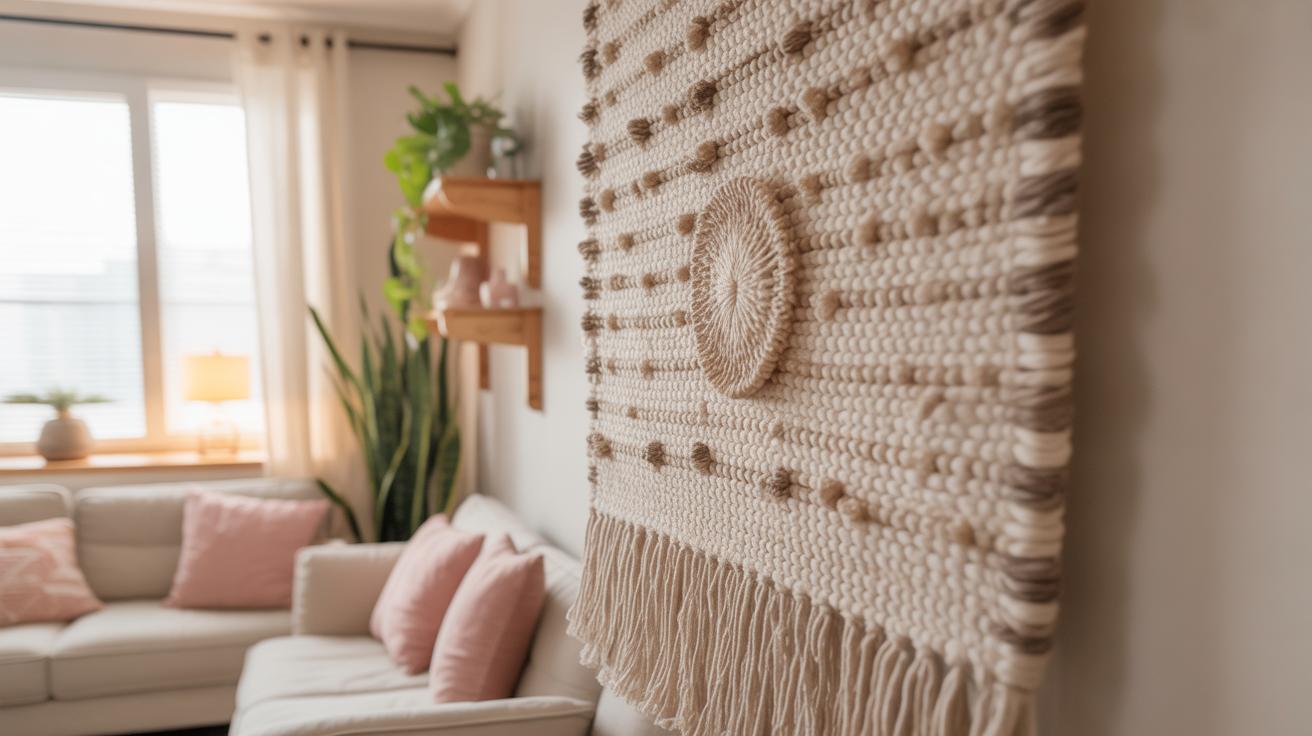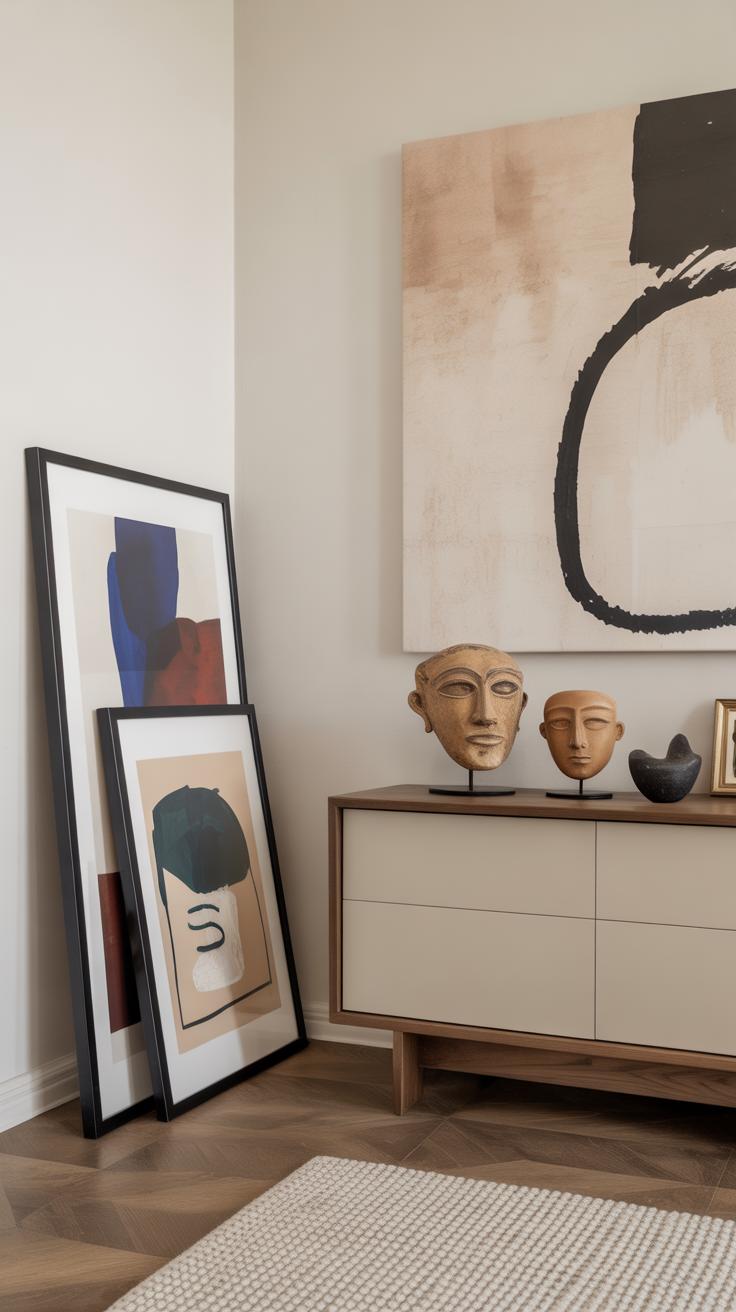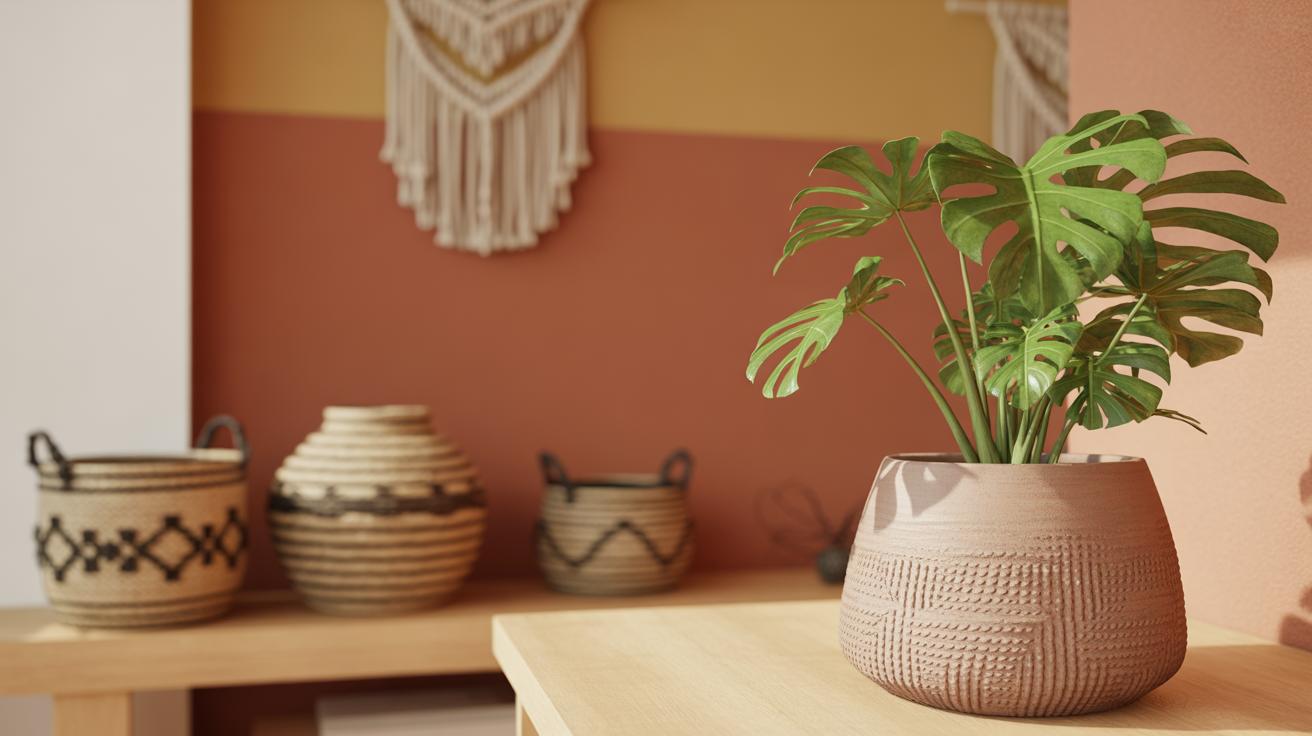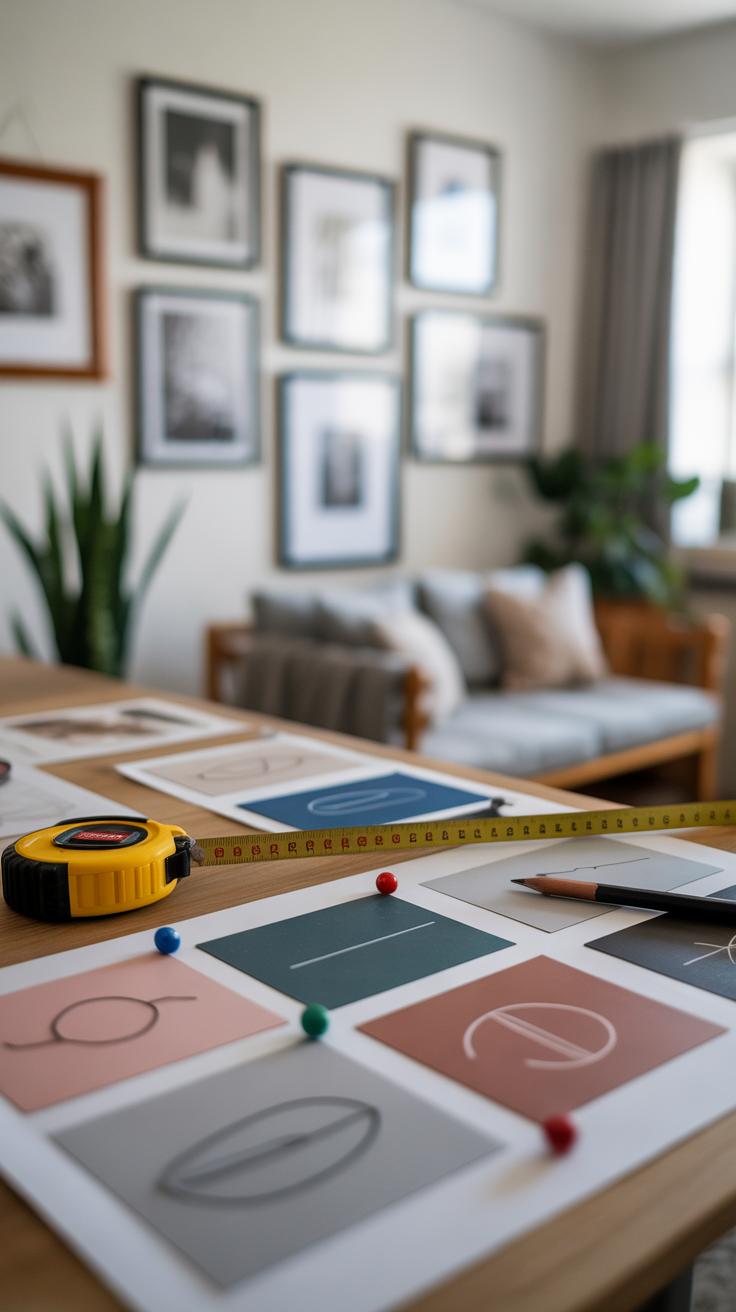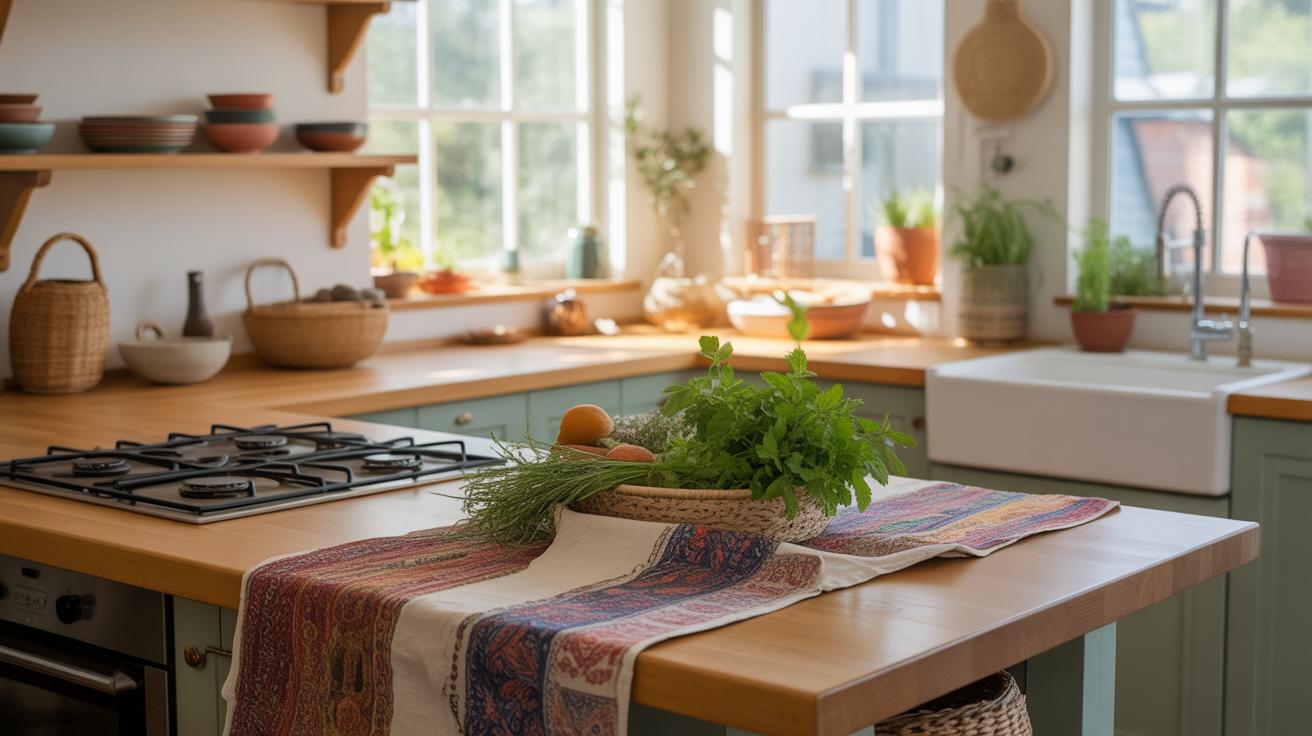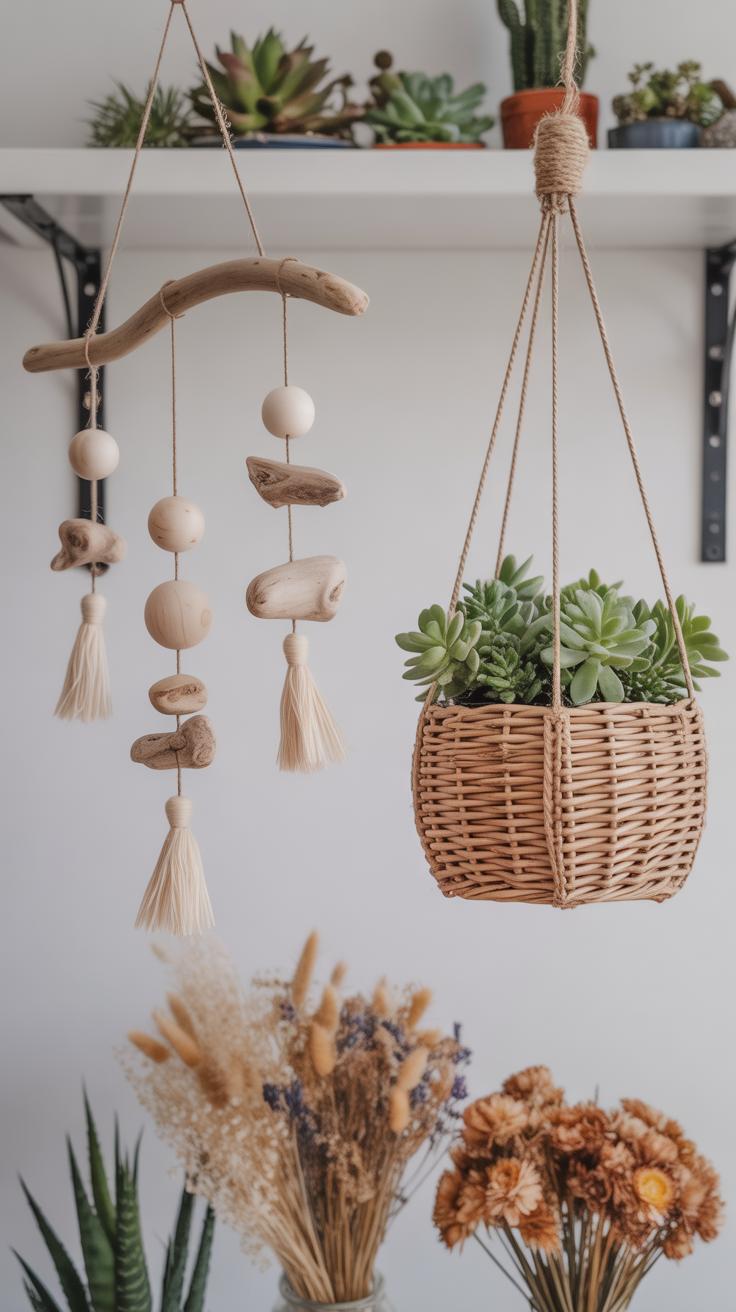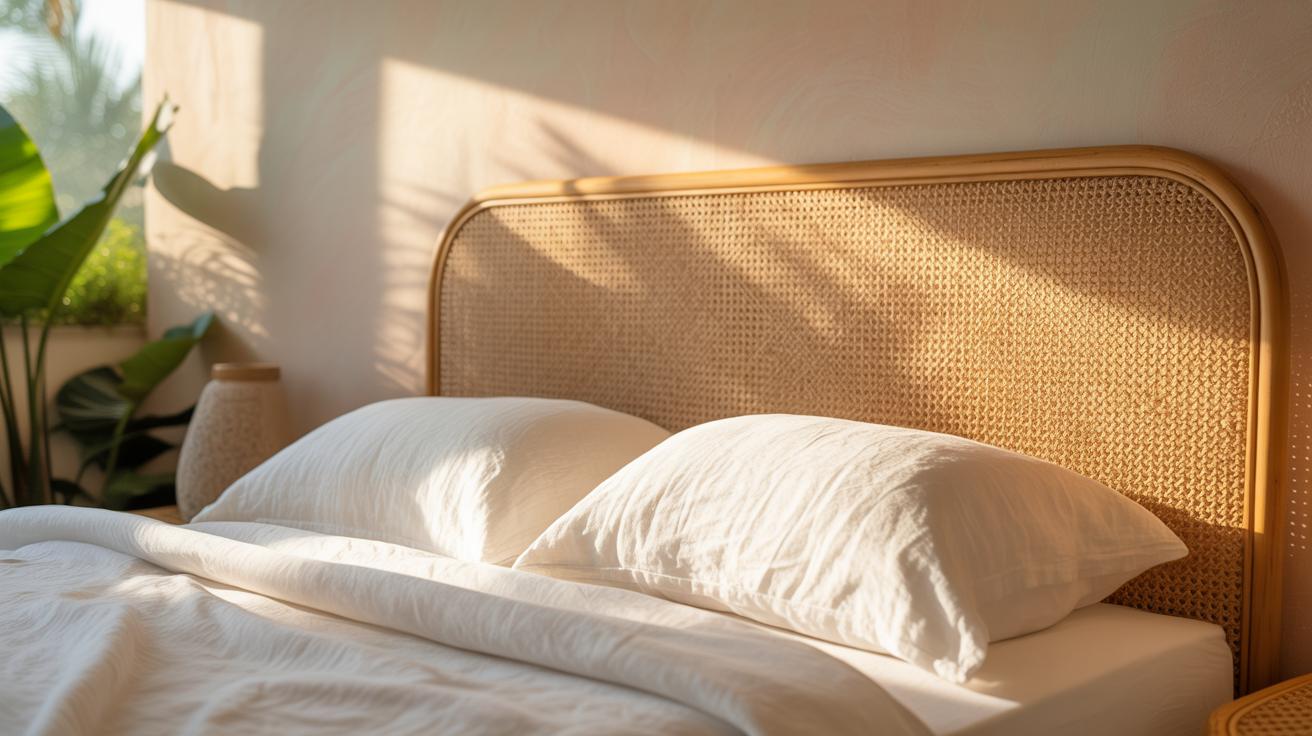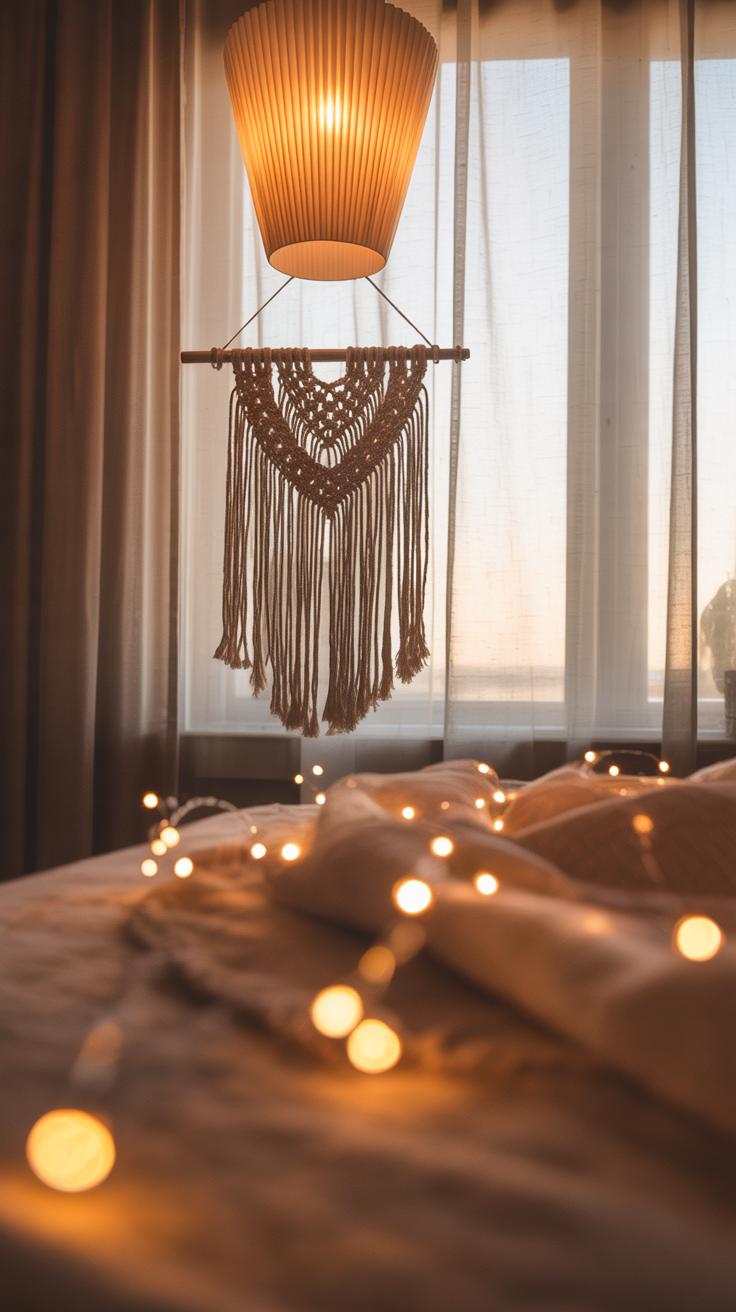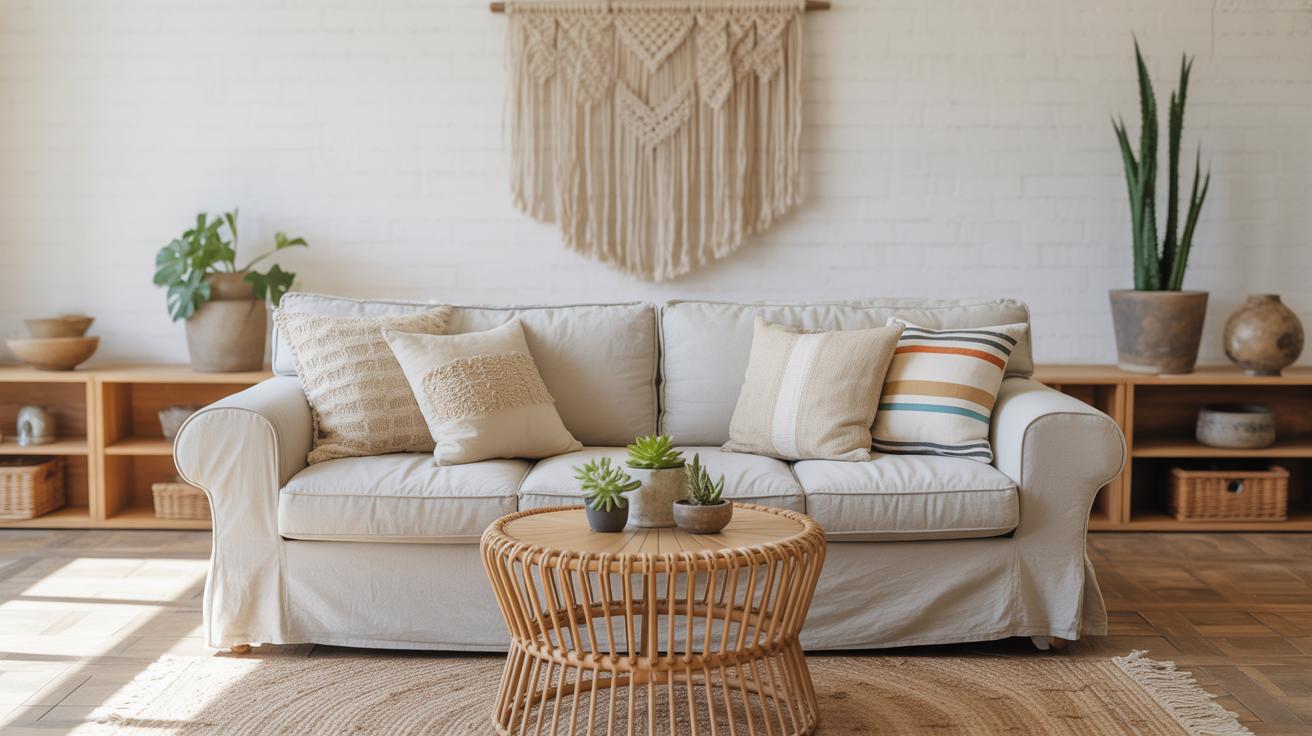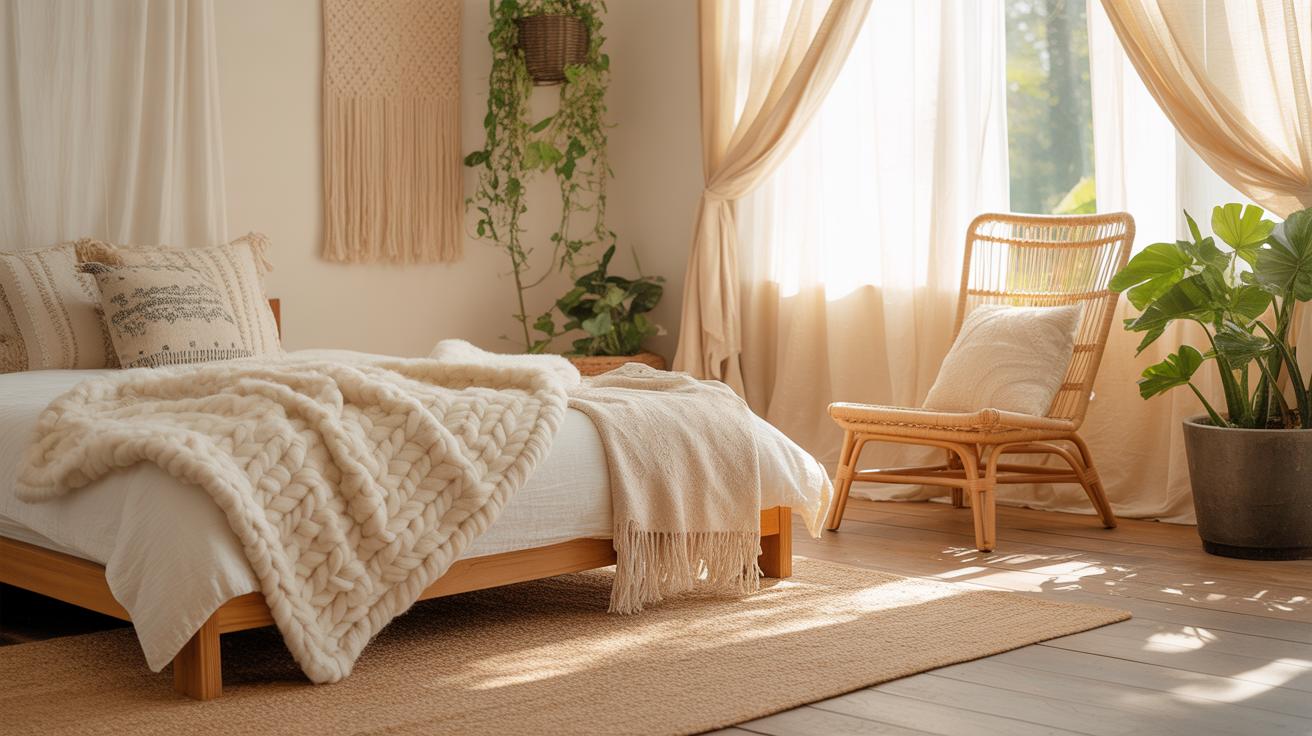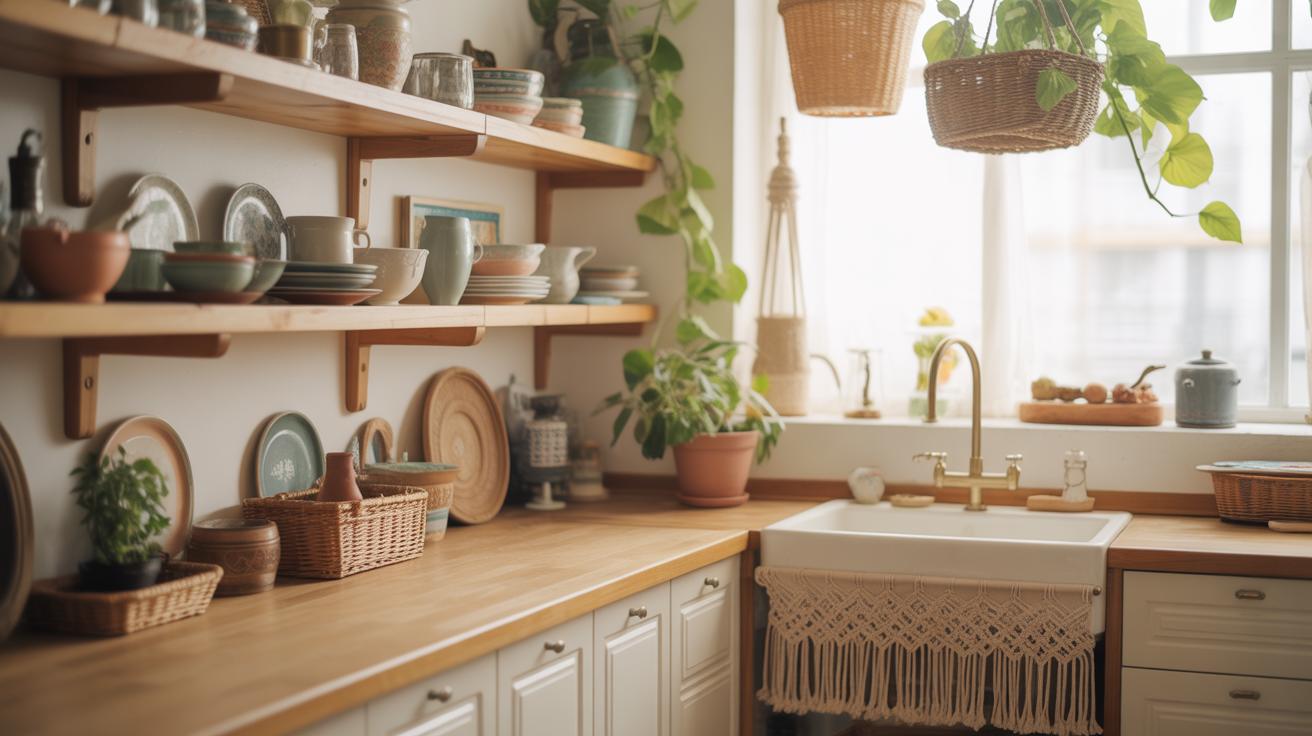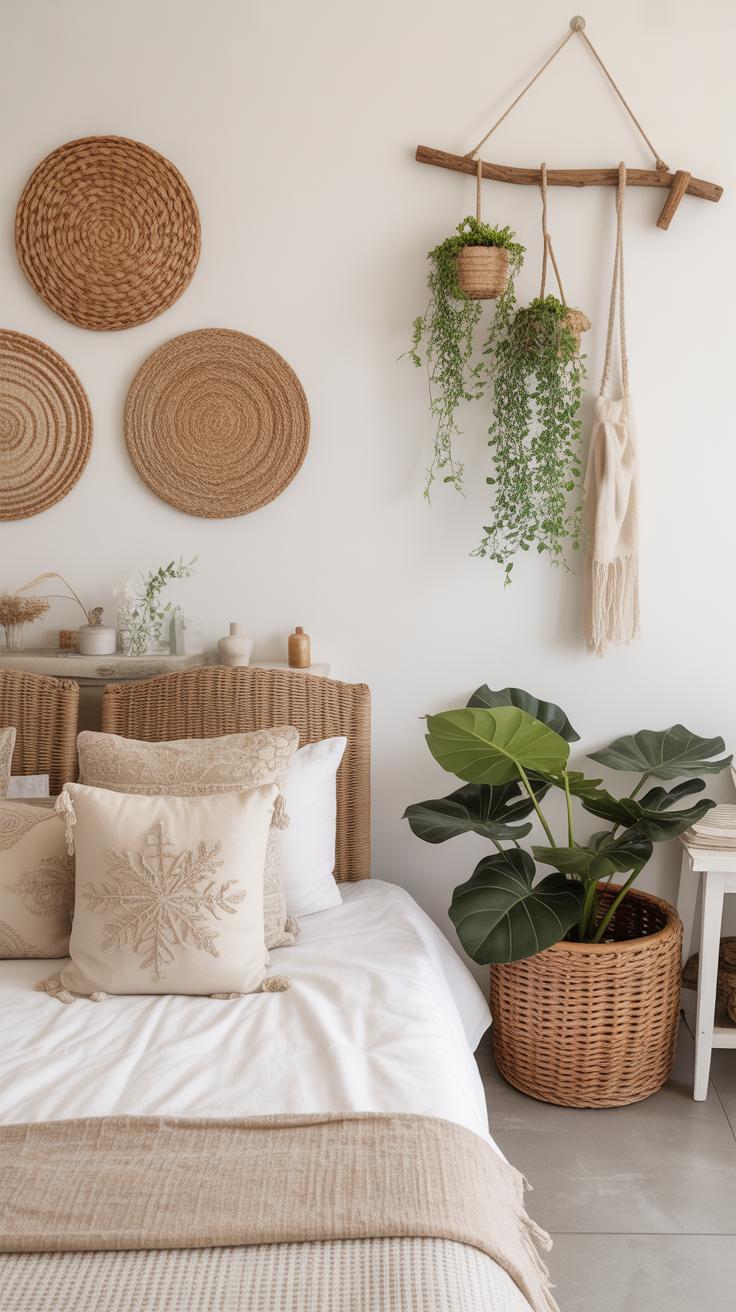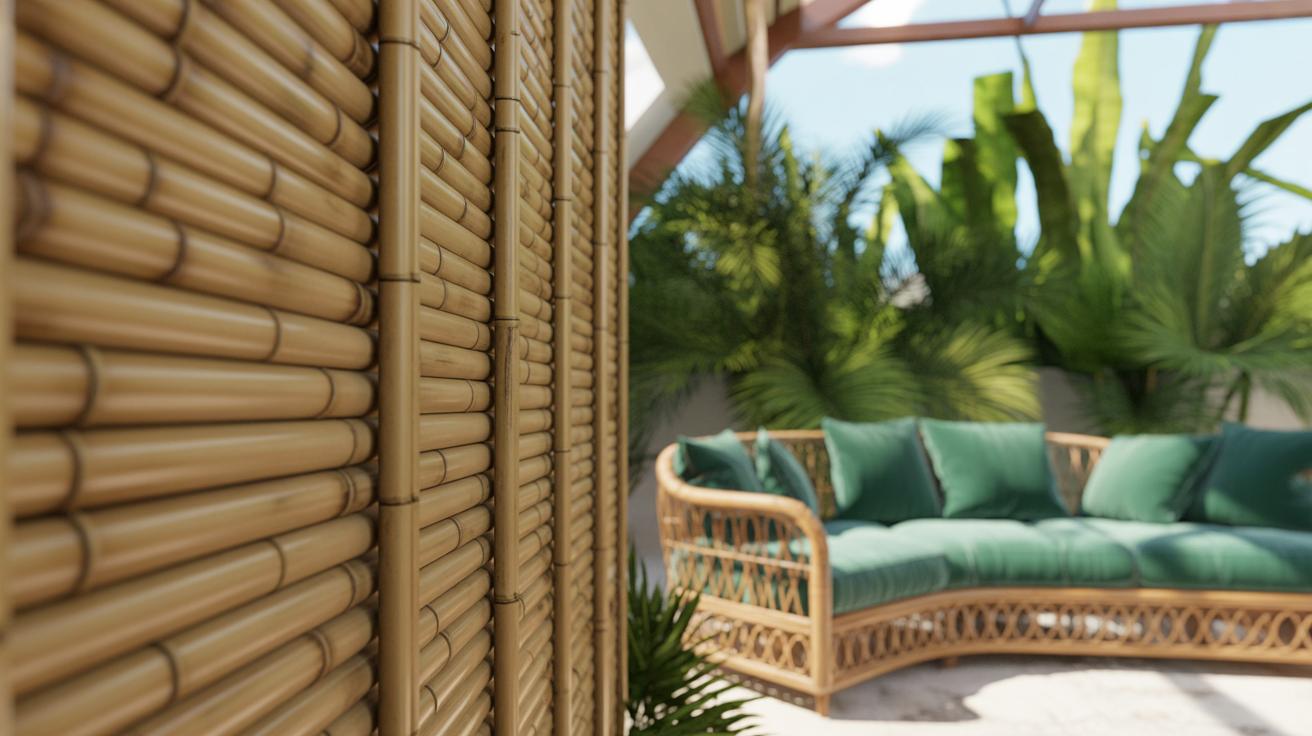Introduction
Boho walls reflect a lifestyle that values freedom and self-expression. Using textiles and art on your walls can bring this vibe into your home. This style lets you mix colors, shapes, and materials to build a relaxed and inviting space.
In this article, you’ll learn how to pick textiles and art that match the boho look. You’ll also discover ways to arrange these items on your walls to create a style that feels natural and personal. Let’s start your journey to a beautiful boho wall.
Understanding Bohemian Wall Style
What Boho Style Means
Bohemian style is less about strict rules and more about blending. It borrows from many cultures—think Moroccan rugs, Indian embroideries, and Native American motifs—all mixed in an unplanned, sometimes chaotic way. It began as a counter-movement against the highly structured, formal design styles popular in the early 20th century. Instead of matching everything, Boho embraces mismatched elements, vibrant colors, and natural textures. Its vibe is relaxed and a bit imperfect, reflecting a life lived openly and creatively. You might associate it with the free-spirited artists and travelers who first popularized it, or with people who value comfort over conformity.
Why Boho Walls Matter
Your boho wall isn’t just a backdrop. It’s a way to tell your story without words. The space invites creativity—you can swap pieces easily, layer textiles and art, and make it genuinely yours. This kind of wall feels warm, inviting, and somehow alive with personality. It breaks away from blank, cold surfaces and injects emotion into your home. Personal expression takes priority over perfection. Maybe you’ve seen those walls filled with eclectic fabrics, hanging plants, and diverse artwork that somehow work together? They show that a wall can hold memories, moods, and meaning all at once. For many, that makes a space more than just a room—it becomes a feeling.
Picking Textiles For Your Boho Wall
When choosing textiles for your boho wall, think about texture and story more than anything else. You want pieces that feel lived-in or handcrafted, not mass-produced or overly polished. Natural fibers like cotton, wool, or jute often work well because they add warmth and depth. Sometimes, you might come across a silky fabric or velvet, which can be interesting—but they might soften that raw, earthy vibe that boho usually has. So, maybe test a few before committing.
Common types of textiles to consider include:
- Woven fabrics: These often have intricate weaves and a tactile quality that invites touch. They can be thick or light, perfect for layering on the wall.
- Macramé: This knotted art is a classic boho choice. Its open designs create patterns that play with light and shadow, providing a different kind of visual interest.
- Wall hangings or large cloth pieces: Look for pieces with fringe, tassels, or a handmade feel. Sometimes, vintage or secondhand finds add character that fresh shop-bought items lack.
Color choices might seem overwhelming at first. You could go for earthy tones—think rust, olive, mustard—or alternatively choose softer pastels, such as blush pink or dusty blue giving a gentler energy. Patterns are another layer. Geometric shapes, ethnic prints, or abstract designs all fit, but mixing too many can get chaotic unless balanced well by neutral space.
One thing I realized often is that the color you like isn’t always the one that suits the wall’s light or your furniture. So, maybe bring fabric samples home and see how they actually look at different times of day. Does the pattern draw the eye or feels like noise? And the colors—do they clash or create calm? Personal taste plays a big role. What feels authentic to you is key.
Selecting Art Pieces for a Boho Wall
When choosing art for your boho wall, think beyond traditional paintings. Pieces that feel personal or tell a story tend to work well. Handmade crafts or prints from various cultures can add that imperfect charm essential for boho style. I once found a small batik print at a local market, and it instantly felt like it belonged—it wasn’t perfect, but in a good way.
Consider these art styles:
- Ethnic prints—think tribal patterns from Africa or intricate mandalas.
- Nature-inspired themes—like desert landscapes, botanical sketches, or wildlife motifs.
- Abstract designs—especially those with earthy tones or fluid shapes, which can contrast nicely with the more structured textiles.
Mixing art with textiles takes some care. Too many pieces can overwhelm the space, but a few well-placed art objects can bring vibrancy without clutter. For example, pairing a woven wall hanging with a simple framed print can keep the focus balanced. I once nearly crowded my wall with three framed prints and two macramé hangings—it felt suffocating until I stepped back and removed one print. Lesson learned. When in doubt, give each piece some breathing room.
Creating A Balanced Boho Wall Layout
When arranging textiles and art on your boho wall, it’s easy to get carried away with layering and colors. But balance matters—even if you want it to feel casual and collected. Start by measuring your wall space carefully. Knowing the dimensions helps you avoid overcrowding one side while leaving the other almost empty. You might want to sketch a simple outline or use painter’s tape on the wall to mark where each piece could go. This way, you get a clearer sense of spacing before committing.
Now, think about symmetry versus asymmetry. Symmetry offers order, like placing two similar textiles on either side of a central art piece, which can ground a room. But in boho style, strict symmetry can feel too stiff. Asymmetrical layouts invite a more relaxed vibe, mixing different sizes and shapes in an irregular pattern. I’ve found that pairing a large textile with smaller art prints scattered around gives a playful effect—but sometimes it feels off because my eye keeps chasing one element.
Try to blend both approaches a bit. For example, you might align a row of smaller pieces along a central textile, then extend a few items slightly beyond the line to break predictability. It creates an interesting tension, not quite orderly, not wildly chaotic. Don’t be afraid to step back and move things around a few times. What looks good up close may feel uneven when you stand at a distance.
- Measure your wall and plan with sketches or tape marks.
- Mix symmetrical and asymmetrical placement to avoid stiffness.
- Consider size, shape, and color to carry your eye across the wall.
- Experiment with layering textiles underneath framed art for depth.
- Step back frequently to assess the overall vibe from different angles.
What’s your instinct telling you when something seems “off”? Sometimes imbalance feels just right for boho. Other times it’s distracting. Keep tweaking until you find that sweet spot where everything feels comfortable but not forced. That’s what makes your wall truly unique.
Incorporating Natural Elements In Your Boho Wall
When thinking about your boho wall, it’s easy to focus on textiles and art alone, but adding natural elements can truly bring depth and texture. Wood, for example, is an excellent way to introduce warmth without overpowering the space. Wooden frames, especially those with an unfinished or slightly rustic look, create a nice contrast against the softness of woven fabrics or tapestries. You might find that mixing frames made from different types of wood—say, a dark walnut next to a lighter pine—adds unexpected interest.
Natural fibers like jute, rattan, or even wicker can echo the textures in your textiles, making everything feel connected rather than random. Think about hanging a woven basket or a small macramé wall pocket alongside a framed print. It’s a simple touch but instantly grounds the wall with an organic vibe.
Greenery deserves special attention here—it’s a bit of a game-changer. Plants don’t just add color; they bring life and a bit of unpredictability. Hanging gardens or trailing vines draped around a collection of art catch your eye in a way nothing else quite does. Maybe you don’t have a green thumb; that’s fine. Even a few small succulents in wall-mounted planters can make a difference.
Are you worried that adding stones or natural rock elements might clash with your textiles? Sometimes a small cluster of smooth river stones or a mounted geode can enrich the tactile variety on your wall. It’s about balance, and maybe a little risk-taking. Sometimes the effect is subtle, but meaningful. Would you expect that chance to play with these raw, natural materials might lead you somewhere different aesthetically? Perhaps that’s what makes it worthwhile.
Lighting Your Boho Wall
Lighting plays a surprisingly big role in shaping the vibe of your boho wall. It’s not just about visibility—it can make your textiles and art look softer, warmer, or even more dramatic depending on what you choose. When you rely on harsh overhead lights, the whole relaxed feeling can vanish fast, replaced by a sterile or stiff atmosphere. So… picking the right light source feels more like curating part of the design than just ticking a box.
Choosing The Right Light Sources
For a cozy and inviting boho wall, string lights and lanterns often work well. Fairy lights, for example, add a subtle glow without overpowering patterns or textures. They can be draped gently or hung in loose loops to keep things casual. Lanterns, whether paper or metal, introduce pockets of light and shadow, creating interest and depth.
- Try warm white bulbs instead of cool tones to maintain that soft, earthy feel.
- Go for dimmable lamps where possible—you might want more light for reading or less when just relaxing.
- Consider battery-operated options if wires will clutter the look.
One time, I decided to place a Moroccan lantern near some macramé wall hangings, and the way the light cast patterns onto the textile was unexpected but beautiful. It just brought the whole arrangement alive.
Highlighting Textiles And Art
Light isn’t just about general illumination. It’s a tool to direct attention. Spotlights or clip lights with adjustable angles, for example, help you spotlight a key woven piece or a framed print, making it the focal point.
As you think about positioning your lights, ask yourself which pieces you want to pop out first. Maybe that intricate wall hanging or a treasured print deserves dedicated lighting. Soft, indirect light can also reveal texture in fabrics in a way flat light never will. Yet too much brightness washes out delicate fibers or tarnishes vintage colors.
Sometimes, less is more. You don’t always need bright beams; flickering candles placed nearby can create a sense of movement and warmth that’s hard to replicate. Lighting your boho wall is part instinct, part experimentation—don’t be afraid to adjust based on mood or time of day.
Maintaining Your Boho Wall
Keeping your boho wall fresh and inviting can feel like a bit of a delicate task, especially when you’re working with textiles and art that might be more fragile than usual. Textiles, like woven hangings or embroidered pieces, often catch dust and dirt without shouting about it. A gentle approach usually works best—think soft dusting with a feather duster or a low-power vacuum brush attachment. If washing is unavoidable, hand washing with cold water and mild detergent tends to preserve color and texture better than machine cycles. But sometimes, I wonder if a little wear adds character to boho textiles; maybe they don’t need to be pristine all the time.
Art pieces, on the other hand, need a bit more guarding from sunlight. Prolonged exposure can fade colors, sometimes subtly at first, then quite noticeably. Rotating art occasionally or moving them a few inches away from direct light might help, but this depends on your space. Dust buildup can sneak in no matter what; a microfiber cloth usually does the trick, but one must be cautious—rubbing too hard risks damaging delicate surfaces. I often think about how much care is too much care. After all, these pieces live with you, not locked away like museum exhibits.
Maintaining your boho wall isn’t about perfection. It’s more about keeping things looking lived-in yet cared for. You might ask yourself: how much time should you really spend on upkeep? Sometimes, a little neglect doesn’t hurt. But a regular, gentle routine likely keeps your boho wall feeling inviting and truly yours over time.
Personalizing Your Boho Wall
Adding a personal touch to your boho wall makes all the difference. It’s where your story shows up—sometimes loud, sometimes subtle. Photos and souvenirs offer a way to remind yourself of precious moments or places, folding memories into your everyday space. Displaying travel finds next to framed snapshots helps create an informal narrative, like a visual scrapbook. You might hang a woven basket from a market in Morocco beside a sun-faded photo from a summer road trip. The mix isn’t about perfect coordination but more about what feels right to you.
DIY projects give your wall even more personality. You don’t need to be an artist; simple things like hand-painted canvases, embroidered cloths, or macramé hangings made with your own hands bring character no store-bought piece can match. Sometimes, the imperfections in your crafting tell more than polished products ever could. Have you tried weaving a small wall hanging? It’s surprisingly satisfying and sneaks your energy straight into the décor.
- Pin or clip a few favorite photos on a string alongside small souvenirs for a casual, ever-changing display.
- Use natural materials like driftwood or branches as frames or racks for textiles and art.
- Experiment with layering DIY pieces over existing textiles to create depth and texture.
- Combine personal finds with vintage or thrifted items to keep the vibe personal and unpredictable.
Personalizing means leaning into what matters or catches your eye. If something feels a bit random but makes you smile, why not? Your boho wall is yours, after all. It’s less about rules and more about the small pieces of your life that quietly linger in the background of your day.
Adapting Boho Walls To Different Rooms
Boho Walls In Living Areas
When decorating living rooms with boho textiles and art, think about creating a space that feels warm and inviting. This is a place where people gather, so layering different textures on your walls works well. For example, a mix of woven wall hangings and framed prints can create depth without overwhelming the room.
You might want to lean into earth tones or soft, muted colors here. They tend to calm the space while still adding personality. Don’t shy away from asymmetry — hanging pieces at various heights can make the room feel more relaxed and lived-in. If you have a spot near the sofa, try a large textile piece to anchor that area.
What’s interesting is how some unexpected elements can work in the living room. Like, a vintage shawl pinned casually on a wall or a collection of small art pieces grouped seemingly without pattern — these can give a personal, collected-over-time vibe. You want the boho walls in living spaces to invite people in but not necessarily scream “look at me.”
Boho Walls In Bedrooms And Workspaces
Bedrooms and workspaces ask for a different approach, even if they share some boho elements. In bedrooms, think about making the walls restful but interesting. Soft, cozy textiles like macramé or layered lightweight fabrics can work well, but try to keep a sense of calm with more neutral or pastel shades. You’re aiming for something that doesn’t distract but still adds character.
In workspaces, the goal shifts toward sparking creativity without clutter. Boho art pieces that inspire — maybe prints of nature or abstract shapes — combined with smaller, thoughtful textiles work fine here. It helps if the wall feels curated rather than messy. You might want to leave some blank space to keep your mind clear.
Honestly, the balance is tricky. Too many pieces and you get overwhelmed; too few and it loses the boho charm. Curating in bedrooms and offices often means editing more strictly than in living rooms. But a well-placed vintage poster or a simple woven panel can give just the right touch that makes these personal spaces feel truly yours.
Conclusions
Bohemian style walls are about expressing who you are. Using the right textiles and art, you can turn any room into a cozy and creative place. The key is to choose pieces that speak to you and arrange them with care.
Remember, there is no single right way to style a boho wall. Use this guide to help your creativity flow. Your wall can be a space that welcomes you and shows off your unique style.

